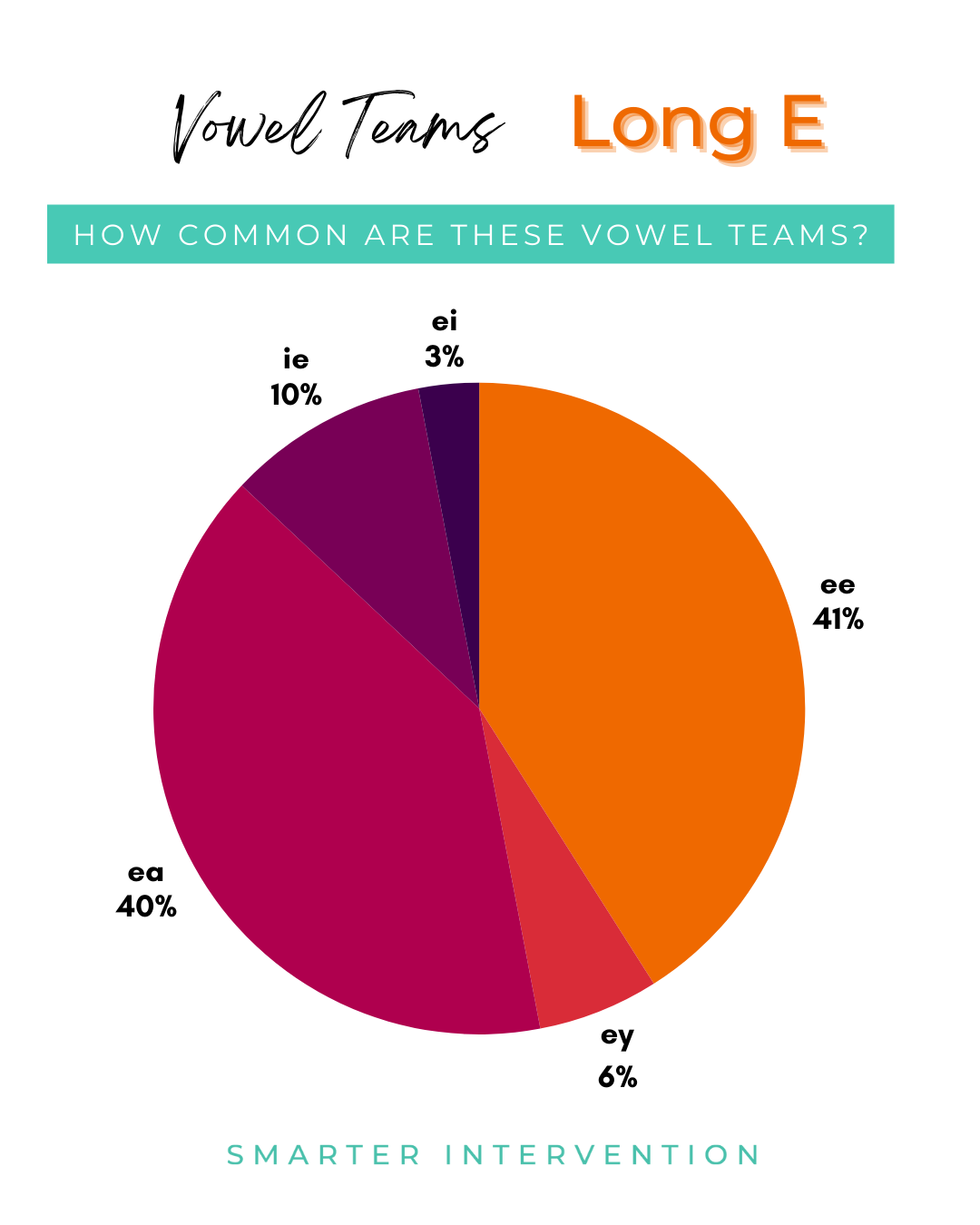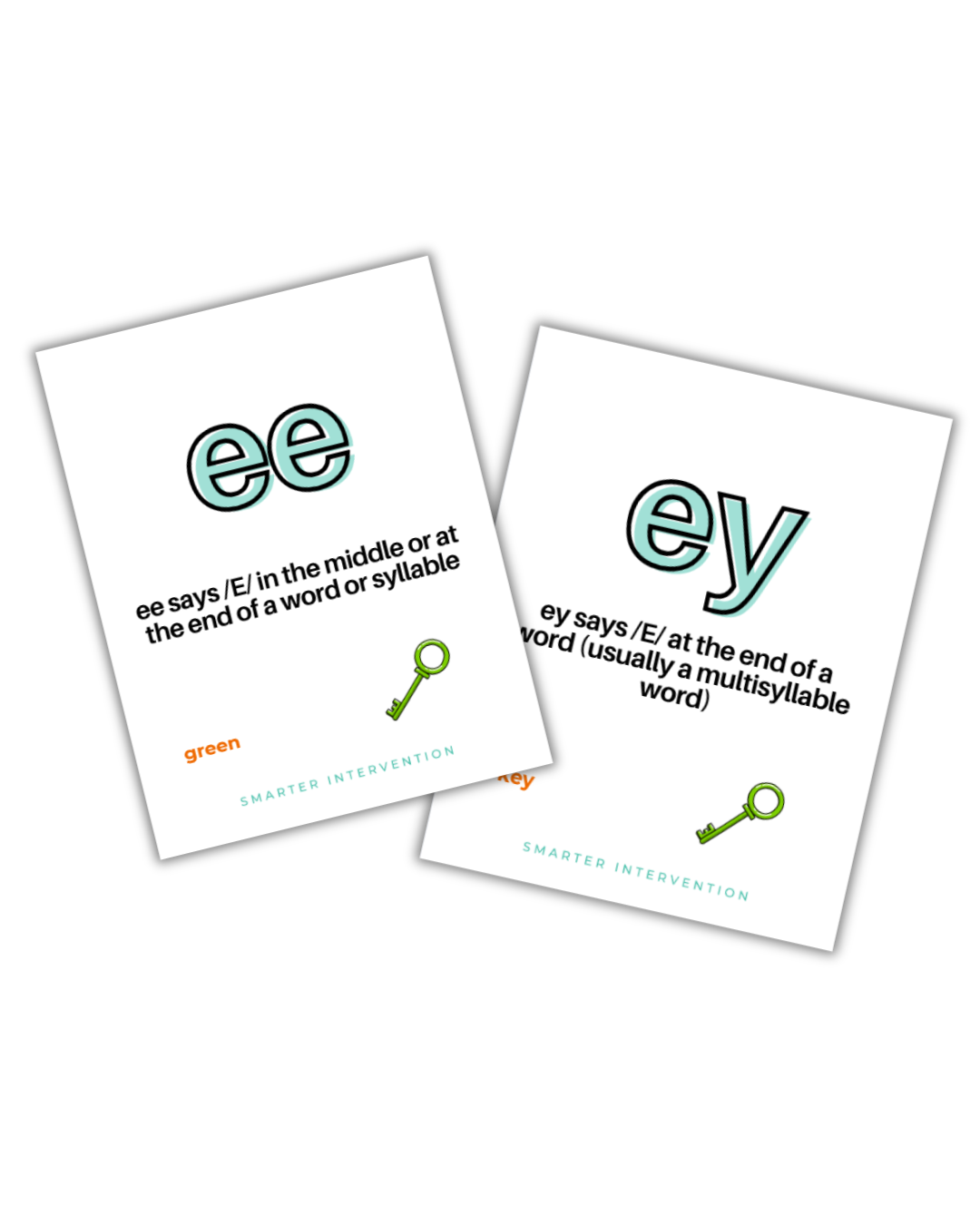How to Teach the ee/ey Spelling Rule
Why it Matters
The long E sound shows up everywhere (green, keys, these, people), but the spelling? That’s where things get tricky.
When we don’t teach students the patterns behind long vowel spellings, they’re left to guess (and second-guess) every time they write. But when we show them how vowel teams like EE and EY work (and where they usually show up in words), spelling becomes less frustrating and more predictable.
What is the ee/ey rule?
Both EE and EY spell the long E sound:
EE is typically found in the middle of a base word
(e.g., green, street, freeze, cheek)EY is often found at the end of a base word
(e.g., key, money, donkey, valley)
We use the anchor phrase:
“Green Key” 🟩🔑
It’s simple, visual, and sticky, just like we want our spelling rules to be.
How we teach the ee/ey spelling pattern
We teach spelling by starting with sound and moving to structured application through writing.
1. Teach the Sound in Isolation
We start by helping students identify the long E sound and how it can be spelled with EE or EY. We practice listening for the sound in both middle and ending positions:
EE = long E in the middle → green, teen
EY = long E at the end → key, turkey
Students listen, say, and sort words by sound position.
2. Connect to Syllable Structure and Spelling Options
We explain that EE and EY are vowel teams that often show up in:
Vowel team syllables (two vowels working together)
Open syllables (like me or he) may also spell long E, but these are different patterns
We help students understand that there’s more than one way to spell long E and EE/EY are fairly common. EA is VERY common as well but also complicated with all the sounds that pattern makes (long E, short E, and long A).
3. Practice at the Word Level (with Vocabulary & Visual Discrimination)
Students sort and spell words using EE or EY, paying attention to:
Where the sound falls in the word
What the word means (e.g., need is not the same as knead!)
Which spelling looks and feels right
This is also a great time to introduce any homophones or close-sounding words.
4. Practice at the Sentence Level
We use structured sentence routines to reinforce spelling:
Sentence Building – Students use 2 EE/EY words in a creative sentence
Sentence Combining – Merge two sentences using target words
Sentence Dictation – Hear and write a complete sentence using EE/EY words, with attention to conventions
This helps move spelling from isolated drills into meaningful, connected writing.
5. Extend to Paragraph Writing (for students who are ready)
Students select several EE/EY words and write a short paragraph or story. This encourages them to apply spelling with creativity and confidence, and shows us which patterns are truly sticking.
What if Students Get Stuck?
Some students:
Try to use EY in the middle of a word (cheek → cheyk)
Overgeneralize EE at the end of a word (monkee)
Confuse long E with other vowel sounds (especially if they’re still building vowel flexibility)
To support them:
Use the “Green Key” anchor to reinforce sound + spelling placement
Include visuals and word sorts
Give them consistent exposure in both writing and reading
And as always, the goal isn’t perfection on day one (it’s pattern recognition and spelling confidence over time).
Looking to teach ee & ey in your lessons?
Depending on where you are in your teaching journey, here are a few next steps:
Just getting started?
Grab our Free Phonics Rules Posters! They’re perfect for hanging in your classroom or using as a quick reference when introducing a new pattern (not only will you get the ee & ey patterns, but tons of other patterns we teach too!).
Download Phonics Rules Posters » Get them here!
Want to see how we teach all the rules?
Check out our Spotlight PD: The Reading Rules We Teach (and Why They Matter!)
This 1-hour on-demand training provides you with everything you need to help you confidently teach the rules that actually move the needle, without getting lost in all the complexity.
You’ll get a clear, research-backed framework that shows which reading rules to focus on, why they matter for the brain, and how to teach them at each level—sound, syllable, word, sentence, paragraph, and passage.







